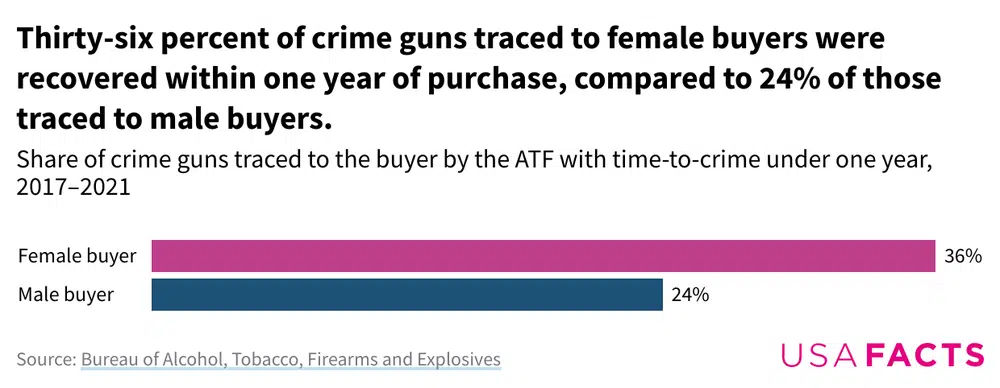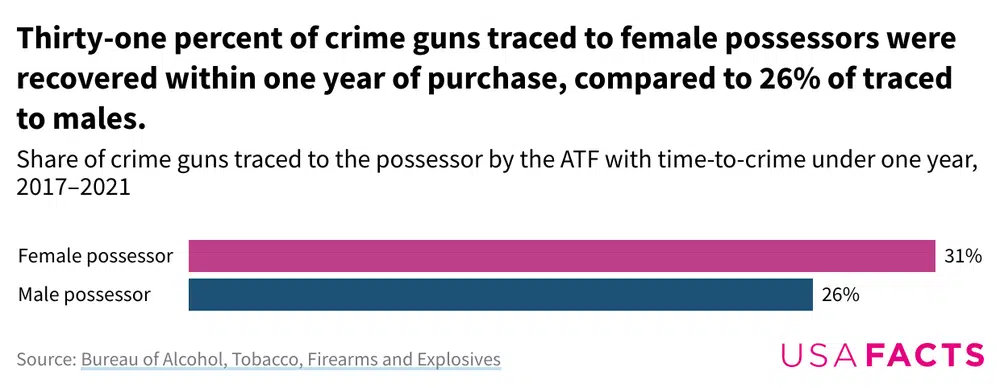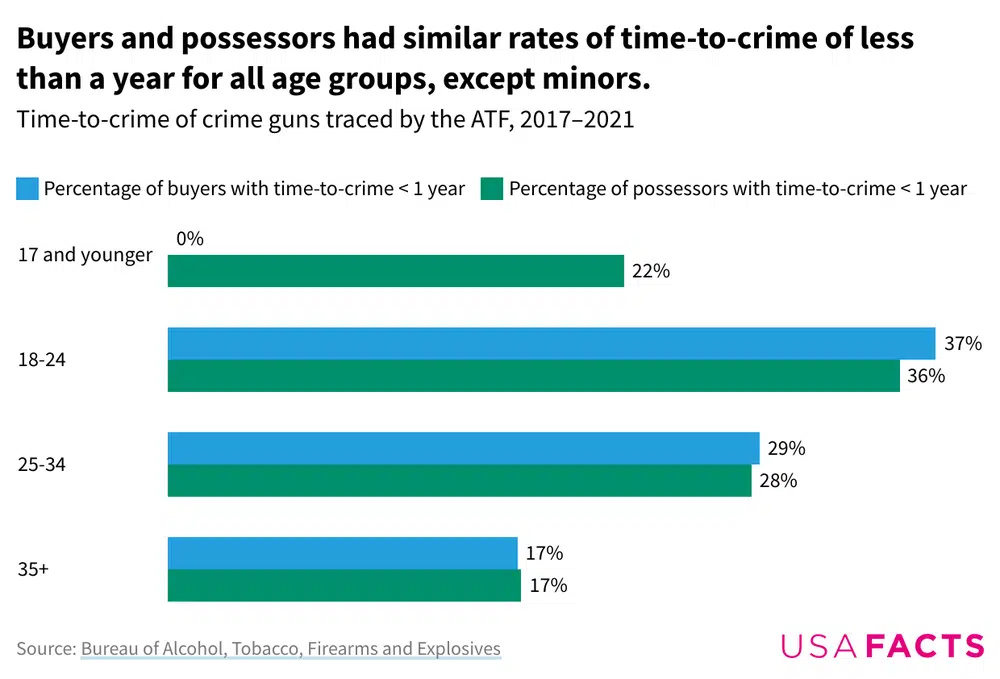Law enforcement uses time-to-crime, the duration between a firearm's last legal purchase and its use in a criminal act, to identify potential arms trafficking. The shorter the amount of time, the more likely the gun was purchased with criminal intent.
A recent Bureau of Alcohol, Tobacco, Firearms and Explosives (ATF) report compared the time-to-crime for men and women and revealed that guns bought by women had a quicker turnaround for being used in a crime. Thirty-six percent of guns traced back to female buyers were used in a crime within one year of purchase, 12 points higher than men (24%).

The report also found that female possessors (meaning they had the gun at a crime scene but might not have been the purchaser) had a slightly higher percentage of guns used within one year of purchase (31%) compared to male possessors (26%). However, at five points, the difference is smaller than that for purchasers.

People 18 to 24 had the highest share of guns recovered within a year, both buyers and possessors (37% and 36%, respectively). This was similar for people ages 25–34 (29% for buyers and 28% for possessors) and over 35 (17% for both).
Minors, who cannot legally buy guns, were an exception: 22% of guns traced back to minor possessors were recovered within a year.

What’s behind this new trend?
The new ATF report covers much of where guns used in crimes originate, who buys them, and the amount of time that passes between purchase and use in a crime. And despite the report’s detailed demographic data, the ATF does not provide an explanation for why women’s guns have a shorter time-to-crime than men’s.
For a fuller picture of crime in the US, read about which firearm had the shortest time-to-crime and get more USAFacts data in your inbox by subscribing to our weekly newsletter.







